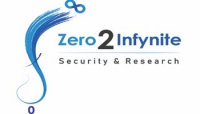- Overview
- Content
- Training Details
Python is an interpreted, object-oriented, high-level, easiest programming language which is in market for more than 20 years. Its high-level built in data structures, combined with dynamic typing and dynamic binding, which is used for application development, web development and so on with low program maintenance cost. At the end of this course you will be master in python syntax and able to develop real life applications with Python.
Before getting started, you may want to find out which IDEs and text editors are tailored to make Python editing easy, browse the list of introductory books, or look at code samples that you might find helpful.
There is a list of tutorials suitable for experienced programmers on the Beginners Guide/Tutorials page. There is also a list of resources in other languages which might be useful if English is not your first language.
The online documentation is your first port of call for definitive information. There is a fairly brief tutorialthat gives you basic information about the language and gets you started. You can follow this by looking at the library reference for a full description of Python’s many libraries and the language reference for a complete (though somewhat dry) explanation of Python’s syntax. If you are looking for common Python recipes and patterns, you can browse the ActiveState Python Cookbook
